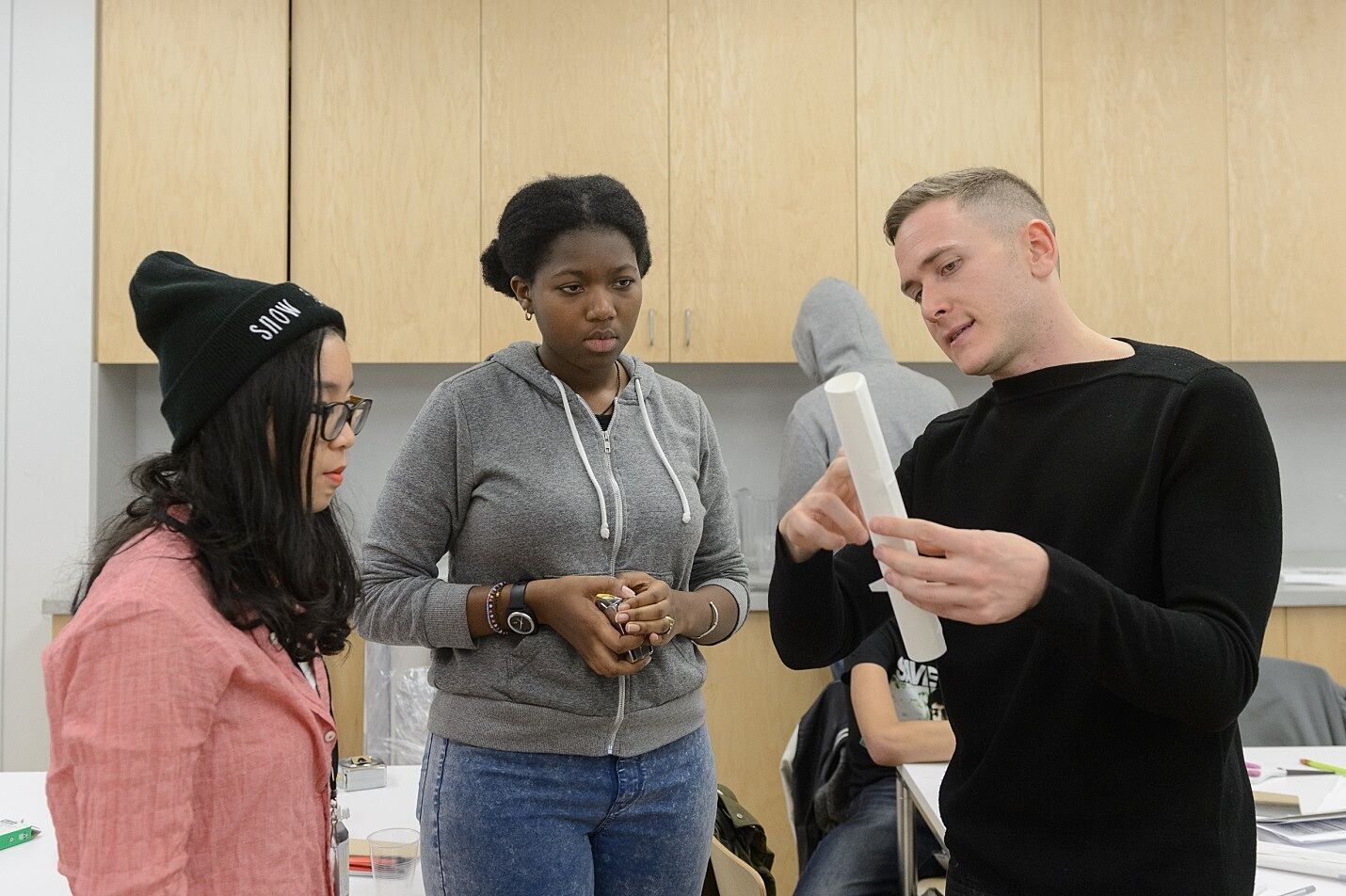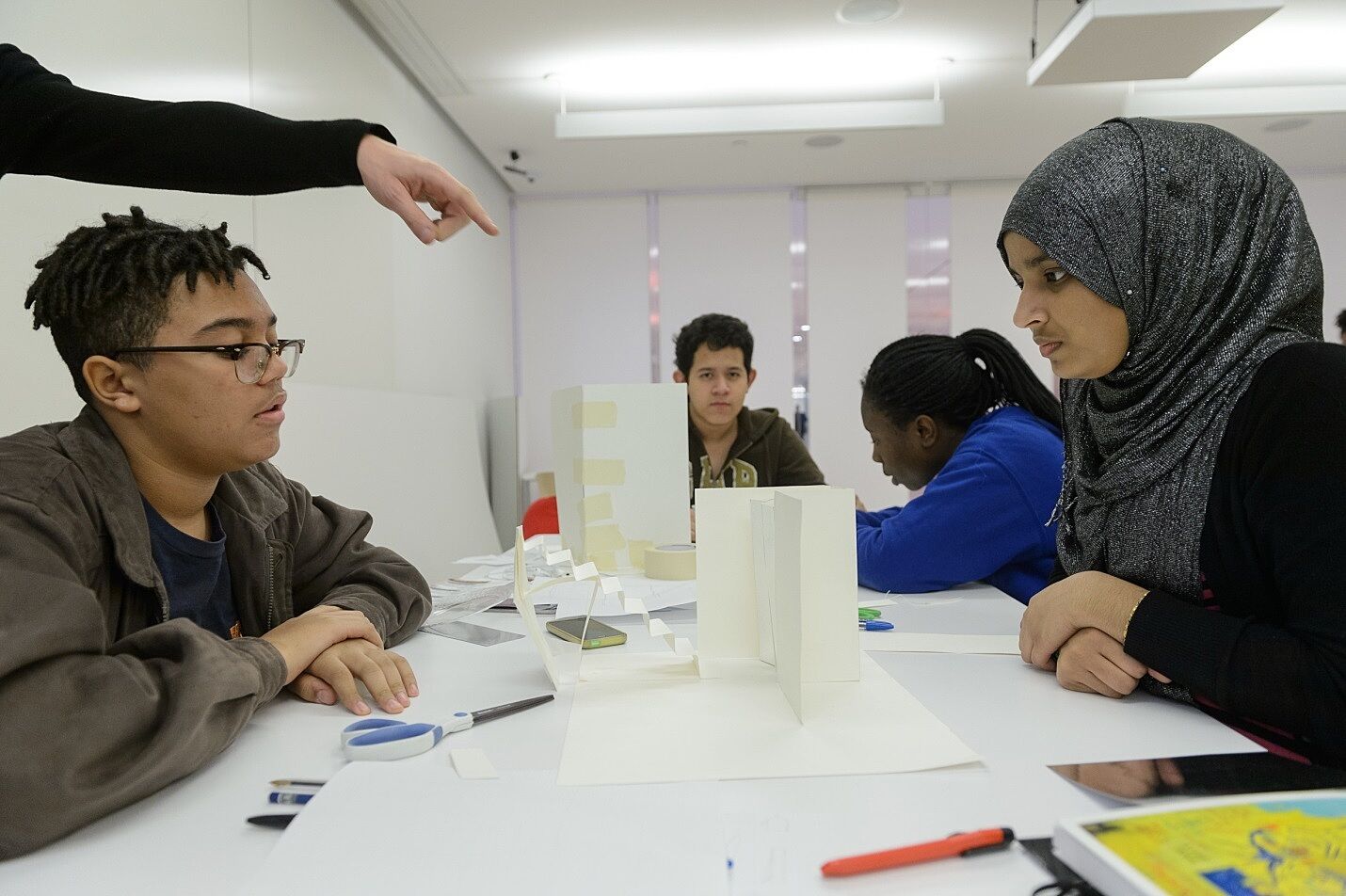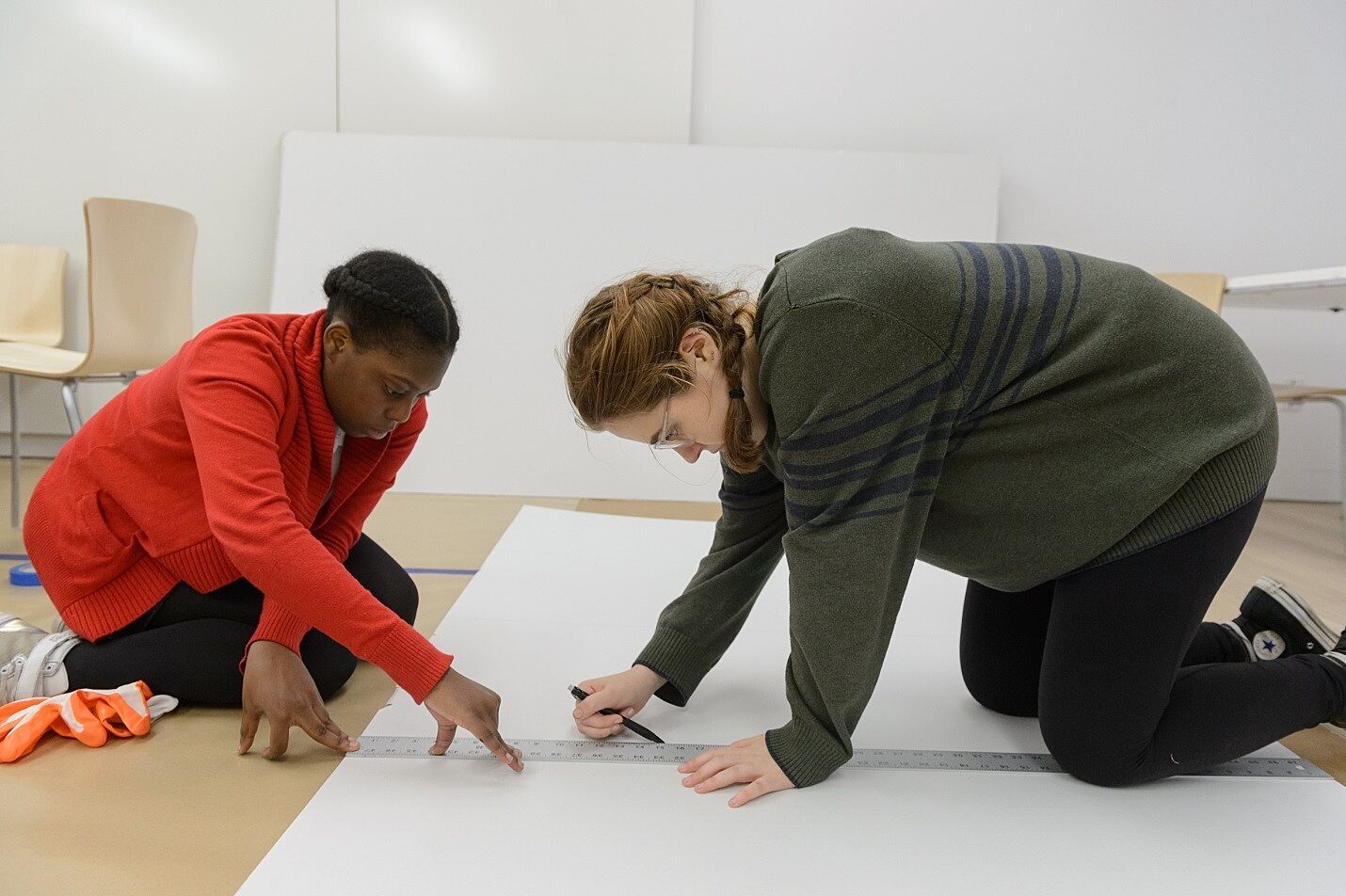Interview with Artist-in-Residence Alan Ruiz
Nov 30, 2015
Alan Ruiz is working with Youth Insights Artists this fall to create works of art that investigate the meaning of space in art. I had the opportunity to interview Alan via email and asked him questions about space and responsibility. Although I did not have a specific expectation, Alan's responses went above and beyond in transforming my personal thoughts and beliefs and sparked much internal dialogue.
How would you define space?
Alan Ruiz: I think space is most interesting when we consider the relationship between things as a kind of information system. What I mean by that is that "space" always implies a set of relationships rather than existing as an empty thing in itself. Even when seemingly vacant, space is made up of a series of economic, political, and material conditions. For instance, a room begins as a CAD drawing, which undergoes a series of iterations and changes in design, budget, and materials. After physical fabrication, what happens within that room is, of course, an entirely different set of spatio-temporal relationships, such as it’s legal ownership, the conversations and debates that might occur within the room—not to mention its relationship to the larger building and geographical site. All of these things are part of the information that determines space.
The Youth Insights Artists and I have spent time thinking about the many physical, perceptual, and social conditions that define a space and how they might produce meaning. Using the Museum as a site, we considered how visitors engaged different areas of the building and whether these spaces were transitional or stationary, marginal or functional, public or private, public or semi-private, private or semi-public, all the while considering the larger position of the Museum with this spatial matrix.
Learning from these questions, we considered how a form, an active form —architectural or embodied—might be generated from one of these spaces. Ranging from performative choreographies to architectural interventions, these experiments illuminate the existing dynamics of the site while also offering new experiences and meaning.
What questions and problems are addressed in your work?
Alan Ruiz: Relating to your previous question, I think a lot about the problem of architectural space itself. However, as someone who works context-specifically, this is always a shifting question. At the same time, recently I’ve been thinking about the similarities between spaces under globalization. For instance, in my built work I’m interested in addressing the hyper-development of our urban environment. How can we represent the homogeneity of space through the abstract language of standardization and, better, what can this say about place? How can we make sense of the shifting luxury-urbanism that is engulfing New York? And what modes of alternative resistance might we discover in the face of this increasing homogenization?
What questions and conversations do you want your audience to have about your work?
Alan Ruiz: Ideally, I'd like my work to shift a viewer's understanding and preconceived spatial notions of the world around them. I think I'm less interested in enforcing a specific conversation and more curious about what kinds of conversations, experiences, and reactions are catalyzed in relation to the work.
What is the biggest mistake you've ever made?
Alan Ruiz: Being an artist, I make mistakes all the time, it's hard to measure the biggest one.
How does an institution like a museum play a role in the career of an artist? What do you think the responsibilities of art institutions are?
Alan Ruiz: These are both really interesting questions. Historically, we know that institutions like museums play a significant role in the legitimization of artistic practice. For an artist, exhibiting in a museum, can lead to critical success which can be translated into economic rewards in the marketplace. Exhibiting in a museum, of course, extends one’s work to a wider audience while also linking it to network of historical discourse.
Yet, we’ve learned from legacies of institutional critique that museums are themselves, not neutral spaces, but agents acting with specific interests. And while museums play a role in shaping public opinion and taste, I think museums can be important sites for social and political engagement. With the increasing commodification of culture in all forms, the museum should, ideally, strive to be a site away from market values.
What are your responsibilities as a visual thinker? How responsible are you?
Alan Ruiz: A friend recently talked to me about the value of aesthetics, in terms of the way they are able to lift, and reframe our understanding of the present. I’d like to think that this is the job of all artists.
By Shao, Youth Insights Leader



